Neurofeedback-Biofeedback
Neurofeedback is fundamentally based on operant conditioning. People can learn to identify and manipulate patterns formed by their brainwaves.
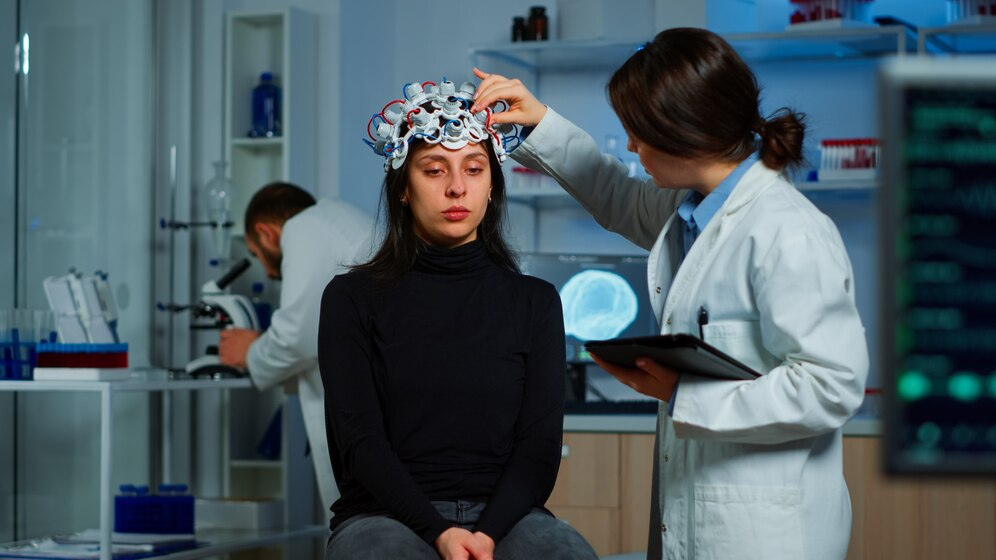
Neurofeedback and biofeedback therapies are stimulating means of making sure that individuals are able to manage stress better, harness their focus, and even treat certain health issues. Most people see anxiety, sleep problems, and even ADHD are common concerns, it is head and biomechanical therapy that teaches how to improve the functioning of the brain and the body. In this blog, we will provide answers to some of the common queries so that you can figure out how to go about these new therapies.
What is the first step in starting neurofeedback therapy?
The first step to starting neurofeedback therapy is finding a professional therapist. Once you choose a therapist, they will begin by evaluating your brain’s activity using special equipment. This evaluation helps create a treatment plan that is just for you. After that, you’ll start regular sessions to improve how your brain works.
Initiating neurofeedback therapy is akin to embarking on any of the known medical procedures. You start by searching for a certified and registered therapist who has particular equipment such as an EEG which assesses the electrical activity of the brain. This assessment shows clearly how the patient’s brain is working and what needs to be addressed. Thereafter, the physician develops a precise course of action aimed at retraining required brain functions. With regular sessions, the patient learns the necessary brain patterns and expands the in-demand functions which can include attention, relaxation, and emotional balance even over prolonged periods.
How do you choose between neurofeedback and biofeedback therapy?
To choose between neurofeedback and biofeedback, think about what you want to improve. Neurofeedback helps with brain issues like focus or anxiety, while biofeedback helps with body issues like muscle pain or heart rate. Talking with your therapist can help you decide which one is better for your needs.
What sets neurofeedback apart from biofeedback is the type of treatment used in both methods. Neurofeedback is used to treat the brain, so it can be used to help with mental health issues such as anxiety, ADHD, and sleepless nights. It teaches the brain to manage its electric activity so that emotions and cognition can be balanced efficiently.
In contrast, biofeedback deals with the physical aspects but is used to control neck aches, whether it be a spasm or any irregularity of heart rates. Feedback sensors to measure specific biological activities and instantaneous enhancement through bilateral feedback are undergone. For better results in therapy, a therapist’s direction toward the ideal one as per your symptoms and health targets will be beneficial.
What equipment is used in neurofeedback therapy?

In neurofeedback therapy, the main equipment used is an EEG machine with sensors. The therapist puts sensors on your scalp, which measure your brain activity. The machine shows your brainwaves on a screen, and you and your therapist can watch them together to see how your brain reacts.
Electroencephalographic neurofeedback treatment is a procedure that uses EEG sensors placed on the skin of the head to read electrical activity in the brain. The received data is processed by the computer and depicted visually as patterns or graphs on the screen. These patterns depict the electrical activity of the brain so that both you and your therapist can see how your brain engages in various activities or reacts to various stimuli.
As you progress through the session, you are able to note changes in activities which are depicted by changes in brainwave activity which helps you be in control of the activities of your mind. This repetitive interaction is extremely important in training the brain to work better at optimal levels.
How often should you undergo biofeedback therapy sessions?
Biofeedback therapy is undergone once or twice a week. Your therapist will suggest how many sessions you need based on your progress. Usually, after 8-10 sessions, you’ll start to see positive changes. Going to sessions regularly will help you get the most benefit from the therapy.
The results of biofeedback therapy are reliant on how regularly and how often the clients attend their sessions. Most people should be starting with one session a week, and this may be one or two sessions within the week, in order to facilitate progression and or enable learning to be consolidated.
Every next session incorporates the skills mastered in previous sessions, enabling your body to develop a sense of control over its stress reactions such as heart rate, muscle tension, breathing, and so on. After 8 – 10 sessions, one might start noticing changes in stress and/or physical discomfort experienced by the body.
What conditions can neurofeedback therapy treat?

Neurofeedback therapy can help with anxiety, ADHD, sleep problems, and migraines. It works by teaching your brain to stay calm and balanced. By changing your brainwaves, neurofeedback helps reduce symptoms and improve your overall mental health.
Neurofeedback finds application in many of them and is useful in treating various conditions. Its approach is most relevant to conditions in which an individual cannot self-regulate the brain, such as anxiety disorders, attention deficits, and sleep problems.
In that sense, neurofeedback makes it easier for the brain to learn how to self-regulate so that as one learns to produce more appropriate brain waves, abnormalities such as hyperactivity, restlessness, sleeplessness, chronic stress or others are reduced to minimal levels. After a while, without additional medication, the use of such devices allows improving mental performance.
What should you expect during a biofeedback session?
In a biofeedback session, you’ll have sensors placed on your body to monitor things like your heart rate or muscle tension. You’ll watch these signals on a screen and learn how to control them. The therapist will teach you relaxation techniques to help you manage stress.
Biofeedback therapy employs sensors affixed to one’s body that can monitor physiological functions, including one’s pulse rate, respiration patterns, skin temperature, and muscle tension. The gathered data is then transferred to a computer in order for the patient to see how the body responds to relaxation or stress concentration exercises.
In sessions, the patient is shown certain techniques like deep breathing, visualization, or muscle relaxation that help control the instinctive activities of the individual. For instance, under stress, you might learn how to control the amount of tension that you habitually hold in or slow your heart rate when it begins to race, which can be very useful for coping with anxiety, tension headaches, chronic pain, or high blood pressure.
Are there any risks associated with neurofeedback therapy?
Neurofeedback therapy is very safe and doesn’t involve any pain. Sometimes people feel tired or have a headache after a session, but these effects don’t last long. It’s important to make sure your therapist is experienced to avoid any problems.
Neurofeedback therapy is highly depressing rather invasive and carries almost no risk. However, some individuals might report mild side effects like headaches or tiredness after a session when the delegated brain is being trained in new techniques. These are normal most of the time and will go away relatively quickly. In order to avoid any adverse effects of these potential risks, it’s wise to collaborate with a trained and practiced therapist who will cater the treatment accordingly to guarantee that your brain gets trained gradually and safely.
Conclusion: Taking the Next Steps
There is a lot of emphasis on improving people’s mental and bodily health through neurofeedback and biofeedback methods without the use of drugs. Be it stress management, focus improvement, or certain ailment attention and treatment, these therapies will do that. No stress, just the right therapist suited for you, and a few regular sessions are all you will need to feel better!
Neurofeedback-Biofeedback
Neurofeedback is fundamentally based on operant conditioning. People can learn to identify and manipulate patterns formed by their brainwaves.

Becoming a neurofeedback and biofeedback practitioner is associated with specific training, certification, and work commitment to helping patients improve their mental and physical health. This career brings science and holistic approaches together to offer diverse options for working in clinical, educational, or research settings. Knowledge of the education, certification, and practical experience needed by prospective practitioners helps them find their way into this demanding yet gratifying profession and make choices that are in line with their professional route.
What education is required to become a neurofeedback and biofeedback practitioner?
To become a neurofeedback and biofeedback practitioner, a foundational education in psychology, neuroscience, or a related health field is essential, usually at the bachelor’s level. Some roles and certifications may require a master’s degree or higher.
Specialized training programs in neurofeedback and biofeedback are basic: these offer hands-on training in technique and equipment. Coursework in brain function, psychophysiology, and applications of these technologies in the therapy context may also be incorporated in such programs.
Upon acquisition of these educational components, the graduate may then pursue professional certification and establish himself/herself in clinical practice. The diploma or degree must be acquired from an approved professional organization training institution, that guarantees quality.
What certification is needed for neurofeedback and biofeedback practitioners?
The certification needed for neurofeedback and biofeedback practitioners is the Biofeedback Certification International Alliance (BCIA) is a leading organization offering certifications in neurofeedback and biofeedback.
This qualification provides use perspective to the candidates who can go for the exams and the training consists of standard training, supervised practice, and the overall certification process of sitting for the exams and passing.
A BCIA Certified practitioner can pursue relevant continuing education courses to maintain active certification. Continuing education of such practitioners will help them make sure that their clients remain healthy through the best and safest clinically tested procedures.
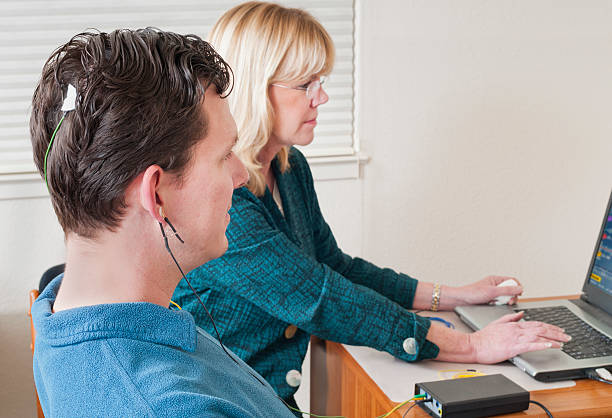
How long does it take to become a neurofeedback and biofeedback practitioner?
The path to becoming a neurofeedback and biofeedback practitioner generally takes 1 to 2 years. This duration includes completing specialized training programs, which often involve coursework, practical experience, and supervised sessions.
For the holders of a profession-related degree, the time frame may be shorter. It will be mostly oriented towards education and certification. The time frame is variable based upon the structure, intensity of the program, and the individual’s ability to complete the necessary certifications which may include the supervised hours provided by the clinics. This way, these practitioners will be able to provide good quality therapy.
What skills are essential for neurofeedback and biofeedback practitioners?
The skills essential for neurofeedback and biofeedback practitioners need a blend of technical and interpersonal skills. Analytical skills are vital for interpreting data from biofeedback equipment and making adjustments to treatment protocols.
Psychophysiology also helps practitioners to put together bodily signals as they relate to mental or emotional states. It is necessary to be skilled in the use of this special equipment for example, neurofeedback people use EEG. In addition to this practical knowledge, patients need practitioners who can also communicate effectively, demonstrate insight, and be practical.
Such qualities help in establishing a trusting relationship with clients, the ability to simplify ideas that are intricate, and leading patients through their therapies. All these skills ensure a holistic approach to the treatment plans of the patients.
Where can one obtain neurofeedback and biofeedback training?
Neurofeedback and biofeedback training can be obtained through accredited institutions like universities, specialized training centers, and online programs. Leading organizations like the BCIA offer approved courses.
The programs of the Biofeedback Certification International Alliance ( BCIA ) list which courses bear the certification requirements, The students will attend those programs that provide complete education, including the theoretical parts on psychophysiology, functioning of the human brain, with the use of biofeedback devices.
One can rarely find some theoretical program that does not emanate from practical training, mostly offered through supervised clinical training or attachments. Some programs, especially, overseas, are interactive and conducted via internet. It is safe to say one need not worry about her the students getting the certificate as long as they choose a valid, accredited program for training.

How do you maintain certification as a neurofeedback and biofeedback practitioner?
To maintain certification as a neurofeedback and biofeedback the practitioners must engage in continuing education. The Biofeedback Certification International Alliance (BCIA) mandates a specific number of continuing education units (CEUs) over a set period.
These CEUs are completed via attending workshops and conferences and taking advanced courses aimed at the understanding of contemporary techniques used in neurofeedback and biofeedback. Seeing that practice is forward looking, gaining new knowledge and understanding through constant research is vital.
You will also often be required to demonstrate compliance with appropriate ethical behavior and appropriate standards of professional practice. A practitioner’s dedication to continued education and the refinement of his skills makes certain that the highest level of care remains in the picture.
What career opportunities are available for certified neurofeedback and biofeedback practitioners?
The career opportunities available for certified neurofeedback and biofeedback practitioners are they can work in private practice, offering personalized therapy to clients. Hospitals and clinics employ practitioners to provide complementary treatments for conditions like anxiety, ADHD, chronic pain, and stress.
So practitioners may be hired in schools for working with students or for biofeedback therapy efficacy studies. There are opportunities for such practitioners in universities or clinics where clinical research is performed to enhance the field.
Moreover, practitioners may also work with psychotherapists, physical therapists, and other health professionals in order to provide integrated care. This variety enhances practitioners in sculpting their career paths in relation to their needs and skills.
Wrapping Up!
A practitioner of neurofeedback and biofeedback intends an education leading to certification, as well as skill-building. This profession equally offers a wide variety where one avails to work in healthcare provision, education, or research managing the mental and physical health of the clients. Practitioners will be able to give good quality services with new information or skills owing to the fact that they are dedicated to further education and skill advancement.
Neurofeedback-Biofeedback
Neurofeedback is fundamentally based on operant conditioning. People can learn to identify and manipulate patterns formed by their brainwaves.
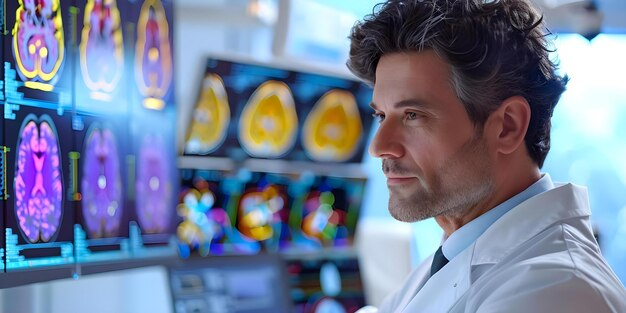
Neurofeedback and biofeedback therapy are particularly popular when it comes to the management of certain mental and physical health conditions. This therapy is however most often dismissed by the majority of people since it is cost ineffective. This is crucial because consideration of the salary to be paid for the sessions, the equipment to be bought, and the extent to which insurance would cover such therapy are necessary factors.
How Much Does Neurofeedback Therapy Cost?
Neurofeedback therapy costs between $100 to $250 per session, depending on location and practitioner expertise. Multiple sessions are often required, increasing the overall cost. Insurance coverage varies, and some plans do not cover this therapy.
Overall, the cost can be significantly steeper considering that it could take 20 to 40 sessions for successful treatment. Several factors determine the difference in cost, and among them are the experience of the practitioner, the cost of clinics, and the quality of equipment used.
Additionally, insurance may not cover neurofeedback, which will all come out of pocket. Patients must check their insurance and see if any plans are available for payment.
Is Biofeedback Therapy Expensive?
Biofeedback therapy costs range from $35 to $85 per session, but advanced treatments may exceed $100. The cost varies based on the equipment used and session length. Insurance coverage is limited, adding to the out-of-pocket expense.
Although the cost is highly dependent on the type of biofeedback, length of sessions, and experience of the practitioner. Very few practices for biofeedback are covered by most insurance, so most patients have to pay out-of-pocket. Anyone interested should first inquire how much it would cost, considering the best price plan around.
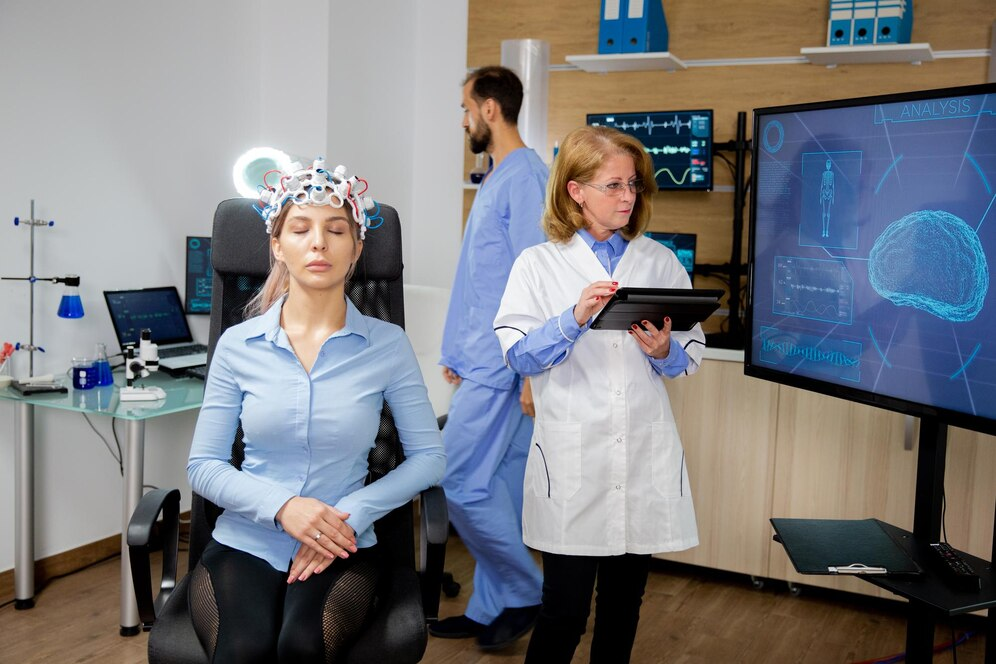
Is neurofeedback therapy covered by insurance?
Neurofeedback therapy is covered by insurance, however, it differs vastly between providers. It might be considered as part of mental health services by some providers that cover neurofeedback treatment, especially if there is a specific diagnosis that would warrant the treatment or anxiety, for example.
Numerous insurance plans still do not provide for neurofeedback as a preferred provider and thus have to be paid out-of-pocket. Patients must inquire about their insurance company prior to beginning therapy regarding what coverage exists, what documentation is required, and what the reimbursement rates are. Knowing the details of insurance coverage assists patients in making early educated guesses regarding the possible financial costs of selecting neurofeedback therapy.
Are there affordable biofeedback therapy options?
Affordable biofeedback therapy options include sliding scale fees, community clinics, and group sessions. Using community clinics or non-profit organizations may also ensure that rates for biofeedback services are lowered. In addition, costs may be reduced with group sessions when possible.
For example, some practitioners offer reduced packages or flexible payment plans that cater to a wide range of budgets. Those who would like to spend less can utilize personal biofeedback devices that can be used at home. Generally, these units cost between $100 and $500, thus significantly cheaper than visiting the practitioner several times. All this puts biofeedback therapy within an average person’s grasp.
How many neurofeedback sessions are needed on average?
On average 20 to 40 Neurofeedback sessions are typically required, with the exact number varying based on the individual’s condition treatment goals and response to treatment.
Every session enhances what had been done prior, and the old patterns of the brain are gradually re-trained. Given that a session costs between $100 and $200, adding up sessions can be pretty fast, and thus may cost several thousand dollars.
The patients should communicate with their practitioner to estimate a number of sessions needed and set a budget to establish possible financial expectations towards therapy at the time of its start.
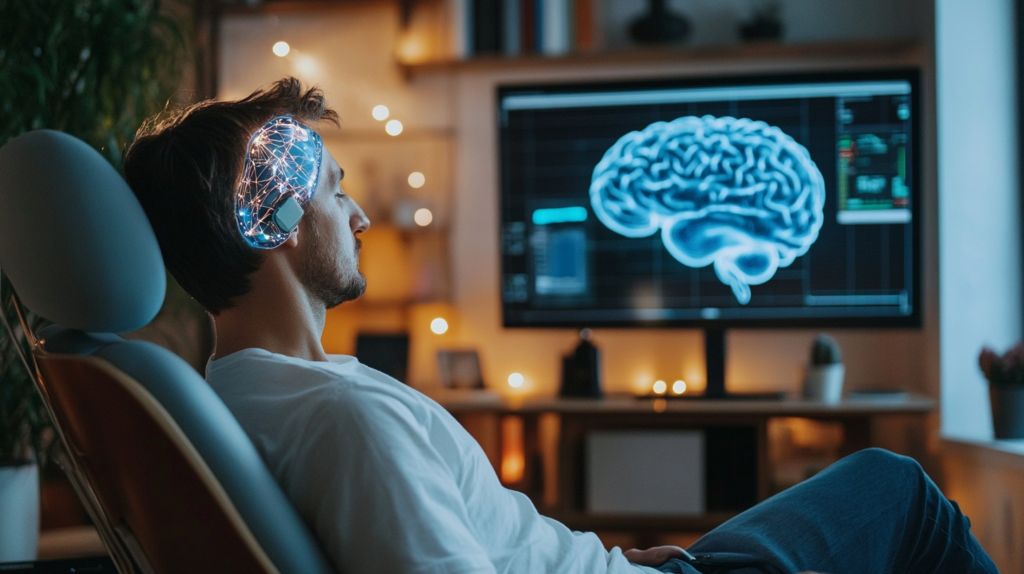
What is the cost difference between neurofeedback and biofeedback?
The cost difference between neurofeedback and biofeedback primarily stems from the complexity of the equipment and the level of practitioner training. Neurofeedback, compared with biofeedback, entails more sophisticated EEG technology and very specialized software. It has a substantially more expensive session cost: $100-$200.
However, as mentioned above, biofeedback, using less advanced devices, typically ranges from $35 to $85 per session. The cost depends on the length and number of treatments. Patients who need more than one session would note that the disparity in the cost grows in time with neurofeedback amassing a higher total cost. This, in turn, brings clarity to the patient’s choice of the therapy best suited to both their medical and economic needs.
Can biofeedback therapy be done at home to save money?
Biofeedback therapy can be done at home using personal biofeedback devices, costing between $100 and $500. These devices offer a cost-effective alternative to in-clinic sessions, though professional guidance is recommended for safe and effective use of the technology.
It allows for practice at home, and therefore clinic visits will be fewer, but therapy success and safety can only be ensured through initial and subsequent guidance provided by the professional. Regular consultations with the biofeedback therapist should allow the patient to follow their progress and modulate their practice as appropriately as they need, and therefore both cost-efficiency and benefit are met when combining a program of professional support with self-practice at home.
Wrapping Up!
Neurofeedback and biofeedback therapy costs vary widely with factors such as the duration of sessions, the degree of expertise of the practitioner providing the treatment, and the equipment used. Discussion of costs with the treatment providers before receiving the treatment will encourage full transparency and help the patients prepare the budget for the most effective treatment. Knowledge of these factors is important for anyone contemplating these treatments.
Neurofeedback-Biofeedback
Neurofeedback is fundamentally based on operant conditioning. People can learn to identify and manipulate patterns formed by their brainwaves.
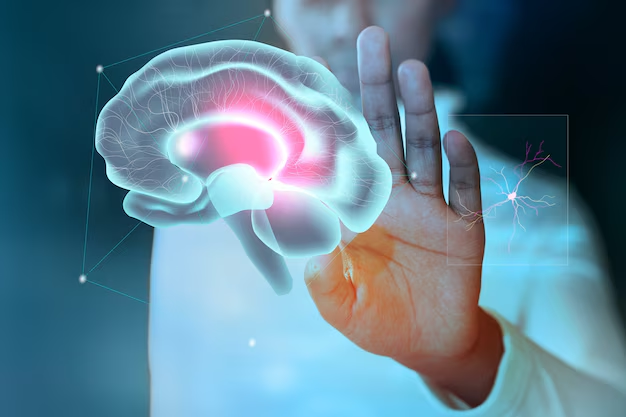
Neurofeedback and biofeedback: Despite challenges and controversies ranging from scientific validity to ethics, increasingly used to treat many mental and physical health ailments. The purpose of this information is to help practitioners and patients make informed decisions based on a well-rounded view of the area.
What Are the Main Challenges of Neurofeedback and Biofeedback?
The Main challenges of neurofeedback and biofeedback include limited scientific evidence, high costs, and inconsistent results. Skepticism arises due to the lack of standardized protocols and varying outcomes. While some find these therapies effective, others question their long-term benefits and accessibility.
Neurofeedback and biofeedback do not have scientific evidence, which raises many questions in the medical field. High-cost barriers also give way to access that is only limited to a few stringent ones due to lack of insurance coverage. Varied protocols also lead to mixed results thus causing controversy over their effectiveness or otherwise.
It seems revolutionary to some while others believe it has not provided enough evidence for long-term therapy. Good training of the practitioners and education among the patients are sine qua non in that regard to overcome such barriers.
Why Is Neurofeedback Considered Controversial?
Neurofeedback is considered controversial due to inconsistent evidence, varied training methods, and high costs. Critics argue that its efficacy lacks consistent scientific support. While some patients experience benefits, the controversy revolves around its reliability and accessibility.
The controversy about neurofeedback stems from a lack of standardized scientific evidence and heterogeneity in training protocols. The heterogeneity of approaches among practitioners raises questions about the reliability of the treatment.
The rising controversy surrounding neurofeedback arises from the fact that the sessions have such high costs that most cannot afford them. Therefore, without a reasonable scientific basis and regulation, some critics say that the actual benefits of neurofeedback cannot be even established through positive anecdotal experience.
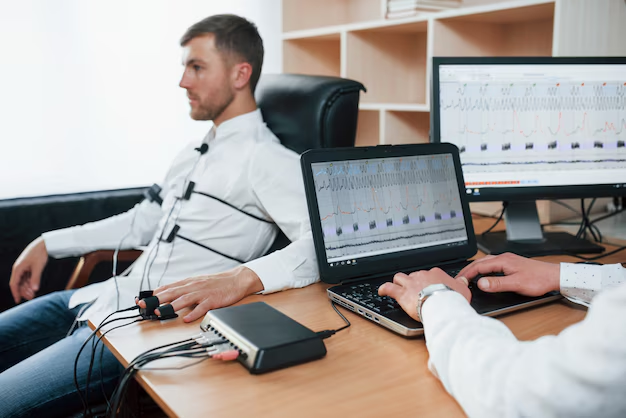
What Ethical Concerns Are Associated with Biofeedback?
The ethical concerns associated with biofeedback include patient safety, data privacy, and informed consent. Ensuring accurate data interpretation and secure handling of patient information is crucial. Ethical dilemmas arise when practitioners promise more than the technique can deliver.
Biofeedback ethics issues involve protecting the privacy and safety of patients and handling information. There should be correct analysis in order not to mislead patients with the results obtained. Patients have to be first informed on what treatment it is and what shortfalls to expect.
Then, some practitioners may sometimes unknowingly promise more than they can deliver, thus putting them into ethical dilemmas between giving patients expectations and what eventually materializes. Responsible practices and establishing trust with the patients work through the settlement of these ethical issues.
Is Neurofeedback Scientifically Proven to Be Effective?
Neurofeedback is proven to be effective with limited scientific consensus. Some studies show positive outcomes for conditions like ADHD and anxiety, but others question its long-term efficacy. The variability in results fuels ongoing debates.
The scientific proof of neurofeedback’s effectiveness varies. Some research indicates positive outcomes for conditions such as ADHD, anxiety, and depression. However, the lack of large-scale, double-blind studies makes it challenging to draw definitive conclusions.
Critics argue that placebo effects or individual variability may account for reported benefits. As a result, while neurofeedback shows promise, its scientific standing remains a topic of debate, needing more robust and consistent research.
Why Is the Cost of Biofeedback a Challenge?
The cost of biofeedback is a challenge due to expensive equipment and training. High session fees make it less accessible. Limited insurance coverage adds to the financial burden for patients seeking long-term treatment.
Biofeedback therapy involves costly equipment and requires specialized training for practitioners, leading to high session fees. These expenses can accumulate, making it difficult for many individuals to afford prolonged treatment.
Additionally, biofeedback is often not covered by insurance, leaving patients to pay out-of-pocket. This financial barrier limits access to those who could benefit, posing a significant challenge in the broader adoption and accessibility of biofeedback therapy.
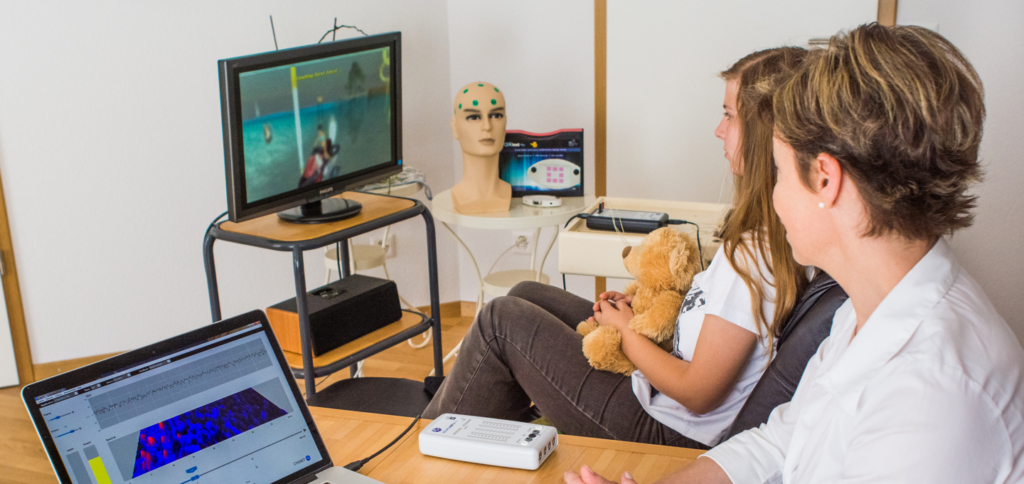
How Can Inconsistent Results Affect Neurofeedback's Reputation?
Inconsistent results affect neurofeedback’s reputation by raising doubts about its reliability. Patients’ experiences vary, leading to mixed reviews. These variations contribute to skepticism within the medical community and among potential patients.
Neurofeedback’s inconsistent results affect its reputation by creating uncertainty about its effectiveness. While some patients report significant improvements, others see little to no change, leading to mixed opinions.
This inconsistency makes it difficult for healthcare professionals to confidently recommend neurofeedback. The varied outcomes contribute to skepticism within the medical community and among potential patients, who may be hesitant to invest time and money in a therapy with unpredictable results.
What Are the Risks of Using Neurofeedback and Biofeedback Without Proper Training?
The risks of using neurofeedback and biofeedback without proper training can lead to misinterpretation of data and incorrect treatments. Risks include ineffective therapy, patient harm, and ethical violations. Proper training ensures safe and effective practice.
Poor training in neurofeedback as well as biofeedback can result in misinterpretation of data and further inappropriate plans of treatments. Therapy may not be effectively carried out, and in some instances, the patient may worsen or get worse.
In addition, the practitioners with lack of extensive training might unknowingly violate the ethical standards-not only to, for instance, obtain patient consent and safety but also to conduct these therapies appropriately. Therefore, proper training and certification are rather important for safely and effectively performing these therapies.
In Conclusion
Neurofeedback and biofeedback have both benefits and problems. Some of these problems include limited scientific evidences, high costs, ethical concerns, or inconsistent results. It is best that the patients and the practitioners are well-informed of these complexities in their approach to treatment. Addressing neurofeedback and biofeedback problems properly with proper training, ethical practice, and further research may be able to unveil these strategies and integrate them into holistic healthcare approaches.
Neurofeedback-Biofeedback
Neurofeedback is fundamentally based on operant conditioning. People can learn to identify and manipulate patterns formed by their brainwaves.

There are neurofeedback and biofeedback treatments that do not require any kind of invasive interventions and are useful in dealing with different kinds of conditions. However, it is very important to remain conscious of the potential risks and side effects and necessary precautions involved because knowledge may help achieve maximized benefits with minimized discomfort or adverse reactions during therapy.
Are There Any Side Effects of Neurofeedback?
The side effects of neurofeedback are minor, such as fatigue, headache, and short-lived mood fluctuations. These symptoms are usually brief and tend to fade out during sessions. Tailoring the protocol of treatment might help solve such issues very often to make the intervention process much more comfortable.
Some may experience dizziness, irritability, or difficulty concentrating after a neurofeedback session. Most of these occur because the brain is accustomed to patterns that it is not familiar with.
Practitioners monitor their clients closely, changing the parameters of the session to minimize discomfort. In most cases, the brain has adapted after continued sessions and side effects will subside, thereby allowing a more healthy functioning by the brain.
What Are the Risks of Biofeedback?
The risk of biofeedback is minimal it is relatively safe, with risks being very slight. It sometimes causes some anxiety or dizziness because individuals start to become quite sensitive towards their physiological states. These risks can be curtailed, however, with proper guidance from a well-trained practitioner of biofeedback therapy, making it a relatively low-risk treatment.
At times, awareness of bodily functions in biofeedback may sometimes lead to short-term anxiety or an uncomfortable focus on sensations. Clients, however, are trained in appropriate management of such sensations with a physician’s supervision.
Practitioners are able to offer relaxation techniques to reduce discomfort, while allowing the biofeedback process to remain positive and beneficial for overall well-being.

Can Neurofeedback Trigger Seizures?
Neurofeedback will not trigger seizures. But if the person has a seizure disorder, then he must seek a healthcare provider prior to treatment. Programs are often created to pose less risk through less potent treatment of brain activity.
While neurofeedback is considered safe in its attempts to control brain activity, patients suffering from epilepsy or a seizure disorder need to be fully assessed before treatment begins. Protocols exist specifically to avoid seizure induction.
This opportunity enables clients with neurological conditions to also receive neurofeedback safely and with significantly reduced risks while working closely with health care professionals.
Is Neurofeedback Safe for Children?
Neurofeedback is safe for children, especially if it is delivered properly by an experienced practitioner. The side effects in some children could appear in the form of feelings of tiredness or irritability. Regular follow-up monitoring and adjustment of the protocol ensure that the therapeutic experience will be positive and safe.
Neurofeedback treatment in children may have minor side effects due to its effect on the brain. However, these are mostly temporary and insignificant. Practitioners, in work with children especially, utilize proper techniques for their age group. Parents are usually involved to help tailor the session to that particular child’s needs and comfort level.
How Do You Reduce Biofeedback Side Effects?
Biofeedback side effects can be reduced by consulting a qualified practitioner, beginning with the shorter treatment sessions, and practicing relaxation techniques. Having flexible treatment protocols according to the individual’s response can minimize discomfort and, sometimes, achieve maximum effectiveness.
Biodfeed can be administered gradually in order that the practitioner is able to watch how the body responds and then make suitable adjustments to the process. Often the treatment is enhanced with relaxation techniques – deep breathing and mindfulness-type exercises, to manage any tension that arises. Communication between client and practitioner is essential, allowing adjustments at every step so that therapy is both comfortable and effective.

What Safety Precautions Must Be Used with Neurofeedback?
Safety precautions that must be used with Neurofeedback involve a qualified practitioner’s initial assessment and informed consent including any known medical conditions. Sessions should be individualized; monitoring should occur during all sessions with protocols adjusted as necessary to ensure both safety and efficacy.
Before the start of neurofeedback, clients are required to give their full medical history, especially those related to neurological conditions or mental health issues. On the first sitting, practitioners make an initial assessment so that sessions can be aimed at tailoring the treatment to the brain patterns of each client.
Continuous monitoring ensures that the response is a positive one from the brain, so parameters in sessions may be readjusted if there’s discomfort or adverse reactions; therefore, this will ensure a safe therapeutic journey.
Can Everyone Use Biofeedback?
Biofeedback can be used by everyone. However some conditions need extreme precautions in place. People with severe heart conditions, psychiatric conditions, or pregnant women must consult a healthcare provider before commencing. A professional practitioner can make accommodation for safety.
Biofeedback treatment may benefit many subjects, but with specific diseases, it can pose a danger to the individual. Major cardiac and some psychiatric illnesses may require special attention and technique. Pregnant women should first consult their doctors about whether biofeedback can address their immediate health requirements.
Session design under expert consultation will ensure that biofeedback is applied in safe and effective ways for different groups.
In Conclusion
Appreciating the potential risks, side effects, and precautions of neurofeedback and biofeedback ensures that these therapies are used both safely and effectively. While generally low-risk, individualized approaches with professional guidance can maximize these benefits. Being informed lets a client make empowered decisions for his journey to well-being.
Neurofeedback-Biofeedback
Neurofeedback is fundamentally based on operant conditioning. People can learn to identify and manipulate patterns formed by their brainwaves.
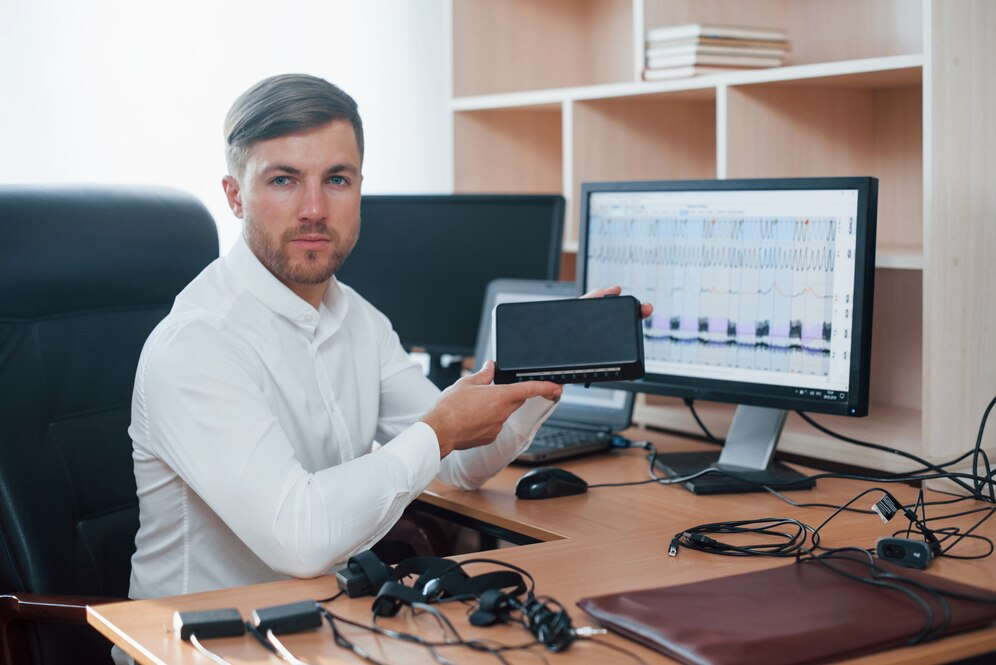
Such accepted practitioners of neurofeedback and biofeedback are alternately referred to as neurofeedback and biofeedback psychotherapists. These specialists help clients control or power up their own mental and physical activities. But there are many practitioners and it is important to identify the right qualifications, certifications, and experience. These practices are aimed at resolving common queries like, what is the procedure for finding a practitioner of neurofeedback and biofeedback that fits your requirements?
What qualifications should a neurofeedback practitioner have?
A neurofeedback practitioner should have certifications like BCIA (Biofeedback Certification International Alliance). They should also have a background in psychology, neuroscience, or a related field. Experience in neurofeedback therapy and ongoing training are key indicators of a well-qualified practitioner.
As with any Biofeedback qualifications and certifications, it is important when looking at any potential practitioner of neurofeedback, that the practitioner belongs to such organizations as the BCIA. Such practitioners have demonstrated the attainment of an established standard in education, ethics, and clinical practice.
Furthermore, these professionals need to have a good education in such areas as psychology, neuroscience, neurotherapy etc. Ordinarily, they would grasp the basic principles of brain and behavior. Practicing neurofeedback for some time and addressing professional development boosts their credentials. A qualified practitioner is constantly in search of more effective ways of practicing neurofeedback.
How do I verify a biofeedback practitioner’s credentials?
To verify a biofeedback practitioner’s credentials, check for certifications like BCIA or AAPB (Association for Applied Psychophysiology and Biofeedback). Verify their training and experience in biofeedback techniques. Reviewing their professional affiliations and client testimonials can also provide insights into their credibility.
Ensuring that biofeedback practitioners are properly trained requires numerous steps. The process begins with looking up the specific certification if there is any from attractive international bodies which include the Biofeedback Certification International Alliance or the Association for Applied Psychophysiology and Biofeedback. Such certifications help determine the person’s qualification, followed by a series of education and ethical requirements for practitioners.
Also, does he or she explain what formal education they have regarding biofeedback therapies and how many there are in total? A traceable CPD activity and membership in a practicing body suggests the provision of quality treatment. Reading client feedback and recommendations can help determine such information as well.

What questions should I ask a neurofeedback practitioner?
Ask about their certification, experience, and training in neurofeedback. Inquire about the protocols they use and how they tailor treatments to individual needs. Understanding their approach to neurofeedback and assessing their experience with your specific condition is crucial.
When seeking the services of a neurologist practicing neurofeedback, it is necessary to ask in order to confirm his/her qualifications. For starters, check the existing documents in their possession, e.g. BCIA certificates, and to what discipline, such as psychology or neuroscience, do they belong. They should be able to explain how long they have been providing this therapy and with what type of patients or conditions.
It would also be advantageous to know the protocols they employ, such as what strategies they incorporate to modify the treatments according to the different brainwave patterns of the patients. In addition, such as how long the client is likely to be in treatment. Many competent specialists will explain how carefully they employ them and how flexible their practice is, which is self-adjusted to the requirements of each patient.
How important is experience in neurofeedback and biofeedback?
Experience is crucial in neurofeedback and biofeedback, as it ensures the practitioner has practical knowledge in applying techniques effectively. Experienced practitioners can tailor sessions to individual needs and adapt protocols. This expertise leads to more effective and personalized treatment outcomes.
Experience matters a lot when it comes to the application of both neurofeedback and biofeedback therapy. In the hands of an accomplished practitioner who has dealt with many clients and many conditions, they have enough knowledge to customize the treatments. They are also able to analyze the results obtained after performing neurofeedback or biofeedback control and even modify the training procedures in order to improve the outcome obtained.
This flexibility is important since no two people will have the same brainwaves and physiological responses. An experienced practitioner is also better positioned to handle any other issues that come up, which could make a treatment session unproductive or unsafe. This knowledge they acquire helps me carry out the better diagnosis of the client’s problems and eventually better their treatment outcomes.
Can I find a qualified practitioner online?
You can find qualified neurofeedback and biofeedback practitioners online. Look for practitioners with verified certifications, detailed professional profiles, and positive client reviews. Ensure they offer initial consultations to discuss your needs and verify their expertise through professional associations and directories.
With appropriate effort, it is not hard to find a qualified bio or neurofeedback practitioner through the internet. Start with a search for professional associations, listing all trained practitioners such as the BCIA or AAPB. Look for images but more so, reading their bios is very important, a person’s resume, letter of recommendation, and fields of specialty so as to know an individual’s background. Also check their ratings, reviews, and other relevant data for the reputation of the practitioner.
Most practitioners provide a free first appointment at which you can present your situation and see they fit your needs. Never consider any practitioners who do not have certification and relevant experience. Using professional association directories is the best way not to encounter practitioners who do not meet the professional criteria of the field leading to satisfactory and positive outcomes of the therapy sessions.
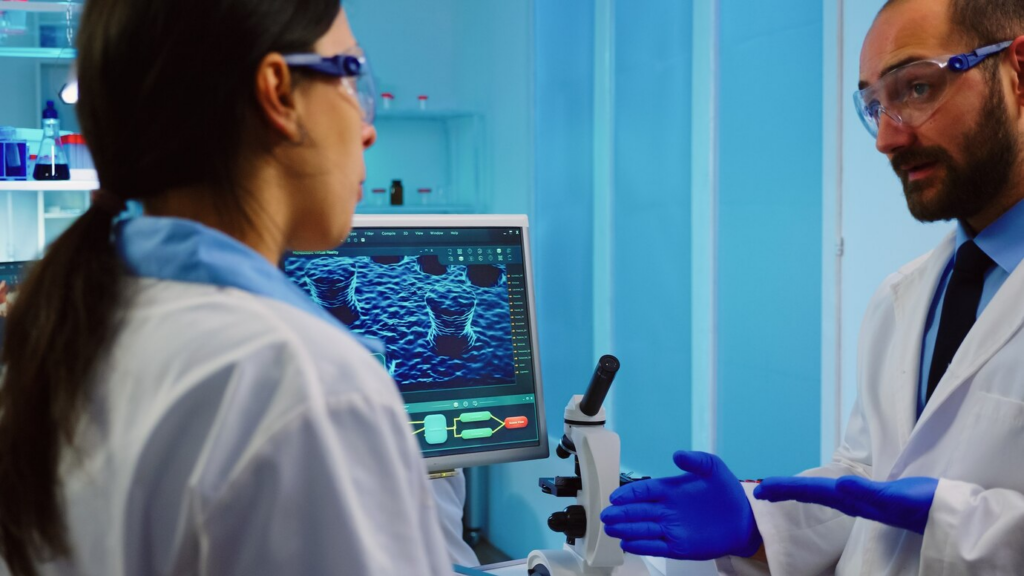
What red flags should I watch for when choosing a practitioner?
Watch for red flags such as lack of certification, vague qualifications, and unrealistic promises. Avoid practitioners who dismiss the need for personalized treatment or offer a one-size-fits-all approach. Transparency, clear communication, and professional credentials are essential in choosing a trustworthy practitioner.
In the process of choosing a neurofeedback or biofeedback practitioner, there are several red flags that can reflect the absence of professionalism or competence. One reason that is especially disturbing is that none of them display any certification from bodies such as BCIA or AAPB. Practitioners who make tempting but unrealistic promises to patients, such as a cure guaranteed or results in one visit should raise red flags.
Vague or shallow statements about their skills and expertise are another answer not to their benefit. Also, stay away from those who prescribe the same treatment to all patients, as neurofeedback and biofeedback require an individualized approach. Competence shouldn’t be questioned. Methods used should be well understood, questions adequately answered, and no selective care given without a good reason.
How do I know if a practitioner is right for me?
The right practitioner will have the necessary qualifications, experience, and a tailored approach to your needs. They should be open to discussing your condition, explaining their methods, and setting realistic expectations. Trust your instincts and ensure clear, respectful communication throughout the process.
When considering neurofeedback or biofeedback treatment one has to take into account their qualifications, experience, and attitudes. She or he should be acquainted with BCIA certification and have been trained in fields like psychology or neuroscience. They should be able to assess your condition and treatment plan during the first meetings as well as describe their working processes.
They must also be participants in the procedures and provide guidance with respect to their limitations. It is necessary to establish trust and comfort; you must be understood, appreciated, and informed. You can be sure that your needs will be attended to, and the health professionals will dedicate themselves to your rehabilitation.
Conclusion:
In clinical practice, it is necessary to search deep enough for a practitioner in neurofeedback and biofeedback to succeed in treatment. Based on the requirements, practical skills, and overall approach, you can enjoy effective and safe treatment. Seek information and don’t be afraid to ask the right questions to eliminate the chances of risks. A responsible health practitioner will provide effective management, and neurofeedback biofeedback to help you upside gain emotional and somatic well-being.
Neurofeedback-Biofeedback
Neurofeedback is fundamentally based on operant conditioning. People can learn to identify and manipulate patterns formed by their brainwaves.
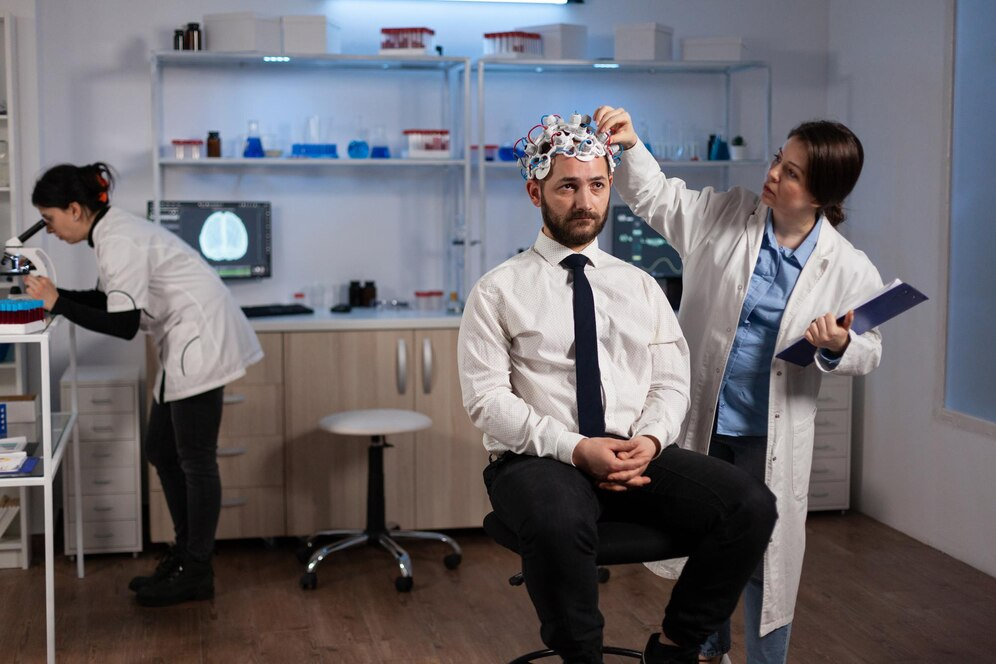
Neurofeedback and Biofeedback therapy have proved highly effective in emotional and physical health enhancement. Nevertheless, relying on some beliefs, myths, and misunderstandings related to these therapies often creates a fog of confusion and skepticism. That is why this manual intends to list the most widespread and, thus, eliminate inadequate myths about how neurofeedback and biofeedback therapies work. By dispelling such myths, we can enable people to use such therapies during the course of their wellness pursuit.
Is neurofeedback just a form of mind control?
Neurofeedback is not mind control but a training method that helps individuals self-regulate brain activity. It uses real-time feedback to guide the brain toward healthier patterns. This process empowers individuals to enhance focus, emotional stability, and cognitive function naturally.
Neurofeedback uses electrodes placed over the scalp to monitor brain waves and provide instantaneous visual or auditory feedback. Through this feedback, the subject is taught to control his brain waves in order to achieve more desirable tactical states. Brainwave biofeedback does not try to control people’s thoughts or subject them to any outside control over their mentality – it just teaches enhanced awareness of ones own mind and how to govern it.
It enables concentration, stress relief and assists in the management of attention deficit hyperactivity disorder (ADHD) or anxiety, for instance. It is rather meant to help the brain learn to do what it is meant to do – independent of the application, which is appropriately safe. Thus, it is safe and effective treatment for mental disorders. The subject works hand in hand with the therapist, encouraging personal responsibility.
Is biofeedback an instant cure for stress?
Biofeedback is not an instant cure for stress but a tool to learn self-regulation techniques. It requires consistent practice and commitment to see long-term benefits. By understanding physiological responses, individuals can manage stress more effectively over time.
The aim of biofeedback therapy is to educate the stroke patient in order to become aware of a subconscious reaction of the body to a stressor then able to manage it using external help. For this kind of therapy, special sensors that record biological functions such as heartbeats or muscular tension are often used.
In addition, a patient has to devote time to biofeedback therapy even when there are no appointments, so that the results interminably last and improve. The latter emphasizes the development rather the resolution of the issue, though the desired outcome is attained after a while. In this manner, patients learn to reduce stress as well as other physiological reactions over time.
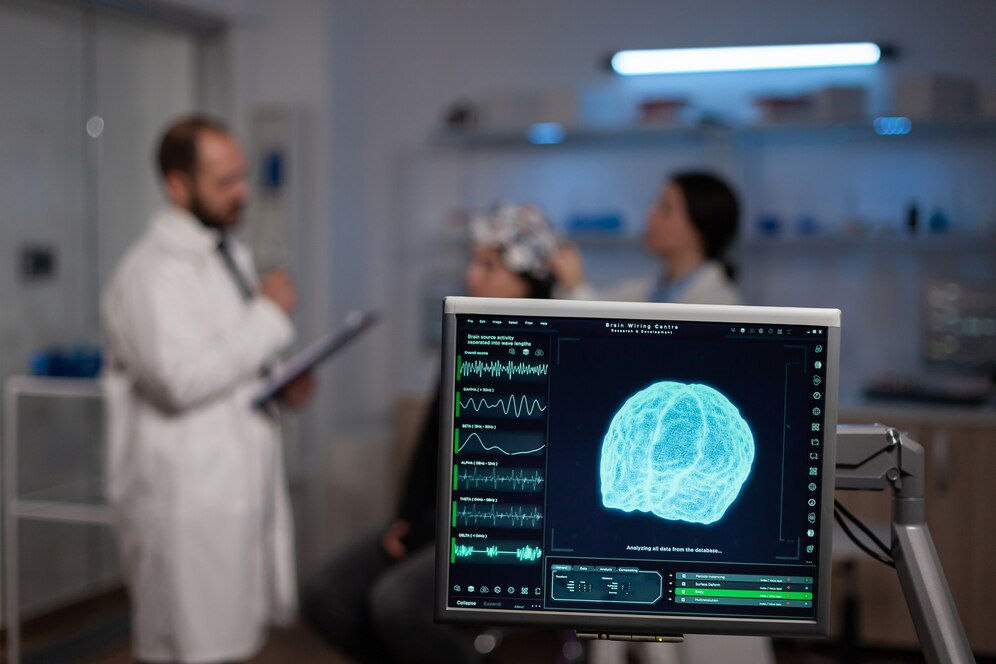
Do neurofeedback and biofeedback require medication?
Neurofeedback and biofeedback do not require medication. They are non-invasive techniques that use feedback from brainwave or physiological monitoring. These methods focus on training the brain and body to self-regulate, often reducing the need for medication in certain conditions.
Neurofeedback also called EEG biofeedback therapy and biofeedback are both non-invasive methods that employ operative feedback to establish the self-regulation mechanism in the individual. In these methods, neurofeedback refers to observation of the brain wave activity whereas in biofeedback concern is directed towards various physiological functions including heartbeat or muscle tonus. In neither therapy is pharmacotherapy utilized.
These are, in fact, safe and very effective strategies that intervene in the management of such conditions as anxiety, Attention-deficit hyperactivity disorder, and chronic pain. Many of these therapies seek to decrease this reliance on medication, encouraging the body to heal itself. However, this should be done under the supervision of healthcare professionals.
Is biofeedback the same as meditation?
Biofeedback and meditation are not the same, although both promote relaxation and self-awareness. Biofeedback uses sensors to provide real-time feedback on physiological responses, while meditation involves focusing techniques. Biofeedback offers measurable data to guide self-regulation, complementing practices like meditation.
Biofeedback and meditation are both methods of creating a state of self-independence and relaxation through different means. Biofeedback makes use of electronic sensors that record biological functions, such as heart level, muscle tension, or even skin temperature. Then this information is presented to the person immediately for the purpose of understanding what changes are taking place in the person’s body and what can be altered.
Biographical practices on the contrary gardening is a series of practices focusing on the mind’s attention processes, certain breathing, visualization, etc. Biofeedback provides more efficient clear, accurate data that would assist people in learning exact strategies in modifying one’s body. In this regard, there is no argument that looks at the effects of biofeedback together with meditation.
Is neurofeedback only for mental health issues?
Neurofeedback is not limited to mental health issues; it can also enhance cognitive performance and stress resilience. While commonly used for conditions like ADHD and anxiety, neurofeedback helps improve focus, sleep quality, and emotional balance in healthy individuals too.
The practice of neurofeedback is most well-known as a treatment method for disorders such as ADHD, anxiety, and PTSD. What few people know, however, is that neurofeedback amplifiers, come jam against these procleans e exceptions, making it ideal for treating Cognitive Development, developing self/self-control, etc.
There are many professional athletes, working professionals, and students who use neurofeedback systems to enhance their span of attention, coping ability against stress, soundness of sleep, etc. Thus, due to the active redistribution of electric activity, stress patterns of the brain with neurofeedback training tend to moderate. It is a practical approach that can be applied to both those who wish to receive psychotherapeutic relief and those who wish to improve and optimize themselves.

Is biofeedback painful or uncomfortable?
Biofeedback is not painful or uncomfortable. It is a non-invasive technique that uses sensors to monitor physiological responses. The sensors are typically placed on the skin surface, providing feedback without causing any discomfort, making it a gentle approach to stress and pain management.
The strategy of biofeedback has been carried out so that it is safe and non-invasive where physiological systems are controlled in an individual. Electrodes are applied to the skin in the course of a biofeedback session in order to recording heart rate, skin temperature, or level of muscle tension. These sensors are applied on the surface of the skin so there is no pain associated with the use of these sensors.
All they do is to measure and display data or present that information in auditory form. This process is entirely passive which helps the person to be trained on biofeedback easily without any pain. Biofeedback has become one of the common procedures for fighting anxiety, stress and chronic pain being a soft and pleasurable method of improving one’s health.
Does neurofeedback offer immediate results?
Neurofeedback does not offer immediate results; it requires multiple sessions and consistent practice. Improvements are often gradual as the brain learns to adopt new patterns. Over time, individuals may experience enhanced focus, emotional regulation, and reduced symptoms of various conditions.
Neurofeedback is a method of training in which the individual learns to modify an excessive brain activity pattern progressively. Unlike quick-fix solutions, it calls for a minimum of twenty regular sessions, forty or more, depending on the particulars regarding the person’s goals and needs. Feedback is provided to the brain, which learns how to alter its activity based on the information given to it.
Gradually, this approach enables individuals to perform beneficial changes in attention, emotion regulation, and mental processes. There are some people who can see their first modifications in a few sessions; however, long-lasting effects usually require persistence. Neurofeedback does not add contradiction to the clinical effects to normal patients, but rather enhances them gradually.
Conclusion:
Neurofeedback and biofeedback are both treatment options that have certain myths and misconceptions which are important to understand for appropriate engagements with such therapies. They should be employed after a thorough clinical assessment and prior consent are given as they are non-invasive and do not require the use of drugs but self-regulation practices.
Although not magical fixes, they are helpful in coping with stress and improving mental faculties and health in general. These misconceptions make it impossible for people to fully embrace neurofeedback and biofeedback in their well-being course.
Neurofeedback-Biofeedback
Neurofeedback is fundamentally based on operant conditioning. People can learn to identify and manipulate patterns formed by their brainwaves.

Neurofeedback and biofeedback are forms of training the brain and body which are based on extensive studies and they help in letting the patients get enhanced mental and physical therapy. More recent evidence us this way of treating specific morbid conditions is effective and includes anxiety and attention disorders or ADHD and even persistent pain. Exploring in depth the law that underpins these / preventive Therapies will be of value for practical application. This manual takes care of typical what we consider as the most significant components responding very briefly with pictures when necessary to assist in the resolution of complex problems.
What scientific principles underlie neurofeedback?
Neurofeedback is based on the principles of neuroplasticity and operant conditioning. It uses EEG to monitor brainwaves, providing feedback that guides the brain toward desired activity patterns. This real-time training can lead to lasting changes in brain function, improving focus, mood, and behavior.
Neurofeedback is based on the principles of neuroplasticity that pertain to the reorganization and growth of the brain cellular network. Electroencephalogram EEG presents a form of neurofeedback since there are electrodes through which the brain’s activity is monitored and this feedback is delivered immediately.
When it comes to the initiation of the reinforcement action, which is now directed toward the desired change of behavior reinforcement repetition of the desired behavior the clinicians induce the relevant brain activity with positive reinforcement. This is referred to as operant conditioning. For example: although this has been proven self-restraint ability, improvement with respect to the bore out disorder, anxiety disorder, and sleeping disorders treatment is consequential. Neurofeedback is less invasive in that it taps into the body’s flexibility rather than placing the person through surgical interventions.
How does biofeedback work from a scientific perspective?
From a scientific perspective, biofeedback uses sensors to measure physiological responses such as heart rate, muscle tension, and skin temperature. By providing real-time feedback, it helps individuals learn to control these functions. This method utilizes the principles of self-regulation and the mind-body connection to promote health and relaxation.
Biofeedback relates to the processes of self-regulation and control over the autonomous body, lying rooted in the body-mind connection. Heartbeat, muscular activity, and even skin temperature may be monitored with sensors. This information is turned into either a visual or auditory signal and fed back into the body so that the individuals observe the degree of relaxation or tension of their bodies.
It is also possible to do some things such as take deep breaths or relax wrists that affect these bodily functions. In the long run, this may help them achieve better control over most aspects of the body which are usually involuntary. Scientific studies endorse the effectiveness of biofeedback techniques in treating conditions such as stress, pain, and hypertension.
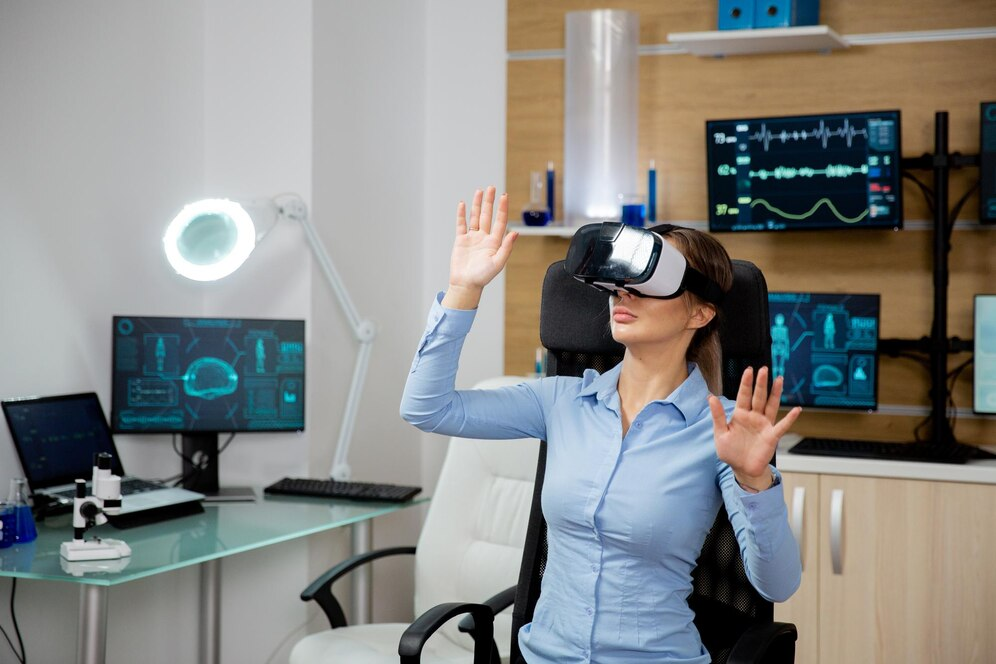
What research supports the effectiveness of neurofeedback?
Research on neurofeedback shows promising results, particularly for conditions like ADHD, anxiety, and PTSD. Studies have demonstrated improvements in attention, emotional regulation, and stress resilience. While more large-scale research is needed, neurofeedback is increasingly recognized as a complementary therapy for mental health.
Neurofeedback is useful, especially for patients with ADHD, anxiety disorders, or posttraumatic stress disorders, as many studies have observed. Several randomized controlled trials have reported positive effects of neurofeedback therapy on attention, inhibition impulses, and emotional behavior regulation.
Clinical outcomes indicate children with ADHD are capable of attaining attention and decreasing hyperactive behaviors following neurofeedback interventions. In the same vein, patients with anxiety have benefited in terms of mood and stress management following their return home.
Neurofeedback still requires more extensive investigations for clear-cut parameters to be established. However, it is being adopted in clinical practice as a safe and non-pharmacological means of managing mental health. The increasing body of evidence makes a case for its use in all therapeutic settings.
Is there scientific evidence for the benefits of biofeedback?
Biofeedback is supported by scientific evidence for its role in managing stress, chronic pain, and tension headaches. Research indicates that biofeedback can lead to significant improvements in physiological control and symptom relief. It is recognized as a valuable tool in both clinical and wellness settings.
Many researchers have mentioned the value of biofeedback in the treatment of obstinate conditions. To generalize the literature, concerning stress more biofeedback decreases physiological response which brings less anxiety and better relaxation. In chronic pain or tension-type headaches, muscle-building variants of biofeedback have been successfully used to enhance muscle relaxation and reduce pain.
Clinical studies have reported the same results regarding the control of hypertension and even the improvement of heart functions. This provides growing evidence for the use of biofeedback as a safe and effective way to self-regulate without drugs, hence improving health. Its application in both healthcare and wellness industries continues to grow.
How do neurofeedback and biofeedback compare scientifically?
Neurofeedback and biofeedback both rely on real-time feedback for self-regulation. Neurofeedback targets brainwave activity using EEG, while biofeedback focuses on physiological responses like heart rate and muscle tension. Both methods have scientific support for improving mental and physical health, though they target different aspects of self-regulation.
Both neurofeedback and biofeedback encompass self-regulatory elements wherein the patient uses feedback for brain and body training. In the case of neurofeedback, brain waves are measured using EEG, and the brain is trained to attain a more optimal balance in the brain’s wave pattern. Neurofeedback has been found to help in the treatment of several disorders, for instance, improved functioning for more control over symptoms of ADHD and reduced anxiety associated with the disorder.
However, biofeedback is concerned with the physiologic processes of an individual including, heart rates, muscle tension, or skin temperature. It teaches an individual to control such physiological responses to reduce the amount of stress and pain felt. Both these practices have scientific backing and are effective so they offer other ways of approaching the well-being of the patient.
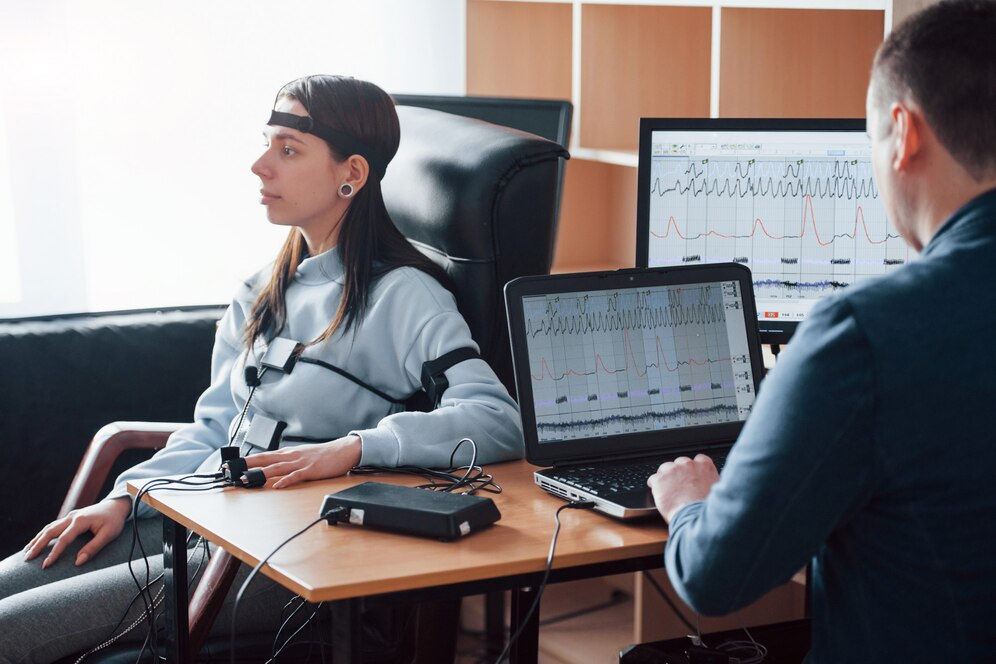
What are the limitations of neurofeedback and biofeedback research?
Neurofeedback and biofeedback research face limitations like small sample sizes and varying methodologies. More large-scale, standardized studies are needed to establish definitive guidelines. Despite these challenges, existing research indicates promising potential for these therapies in managing various mental and physical health conditions.
Neurofeedback and biofeedback have demonstrated apparent efficacy; however, the findings of any RCT studies are usually associated with limitations. Data scarcity and heterogeneity of clinical trials make it often impossible to implement such personalization and to define optimization protocols. In addition, as many of the different forms of therapies gave rise to individual differences in results, further customization is needed.
The obstacles such as the placebo effect as well as the possibility of encouraging further studies of this kind of technique without long-term follow up limit its full assessment. Nevertheless, the current evidence base still suggests the inclusion of these techniques as adjunctive therapies. Further studies are underway to fill these voids, especially embracing the use of large sample sizes.
Conclusion:
There is scientific validation for the use of neurofeedback as well as the use of biofeedback in self-regulation in relation to the mental and physiological health of the individual. However indisputable limitations exist, and evidence is steadily building on their efficacy in the management of ADHD, chronic pain, anxiety problems, and a host of other diseases. Their active combination with other therapies will benefit the patient. Knowing the science behind neurofeedback and biofeedback requires patients to do proper planning.
Neurofeedback-Biofeedback
Neurofeedback is fundamentally based on operant conditioning. People can learn to identify and manipulate patterns formed by their brainwaves.

Some specific neurofeedback and biofeedback methods are quite straightforward so that anybody can apply them and be able to manage their physical and psychological states. These methods are aimed at training the body and the psyche of a person towards a favorable and healthy condition. A better understanding is gained in terms of how cognitive skills should be applied in an effort to enhance physical health.
What is the process of neurofeedback training?
The process of neurofeedback training involves attaching EEG sensors to monitor brainwave activity. The individual receives real-time feedback through visual or auditory cues, guiding the brain to achieve desired patterns. Over time, this training helps regulate brain function, improving mental health and cognitive performance.
Neurofeedback training often entails the use of EEG electrodes placed on the scalp to map brainwave patterns. These brain waves are observed and directed through the stimulation of movie viewing and listening to produced sounds, which assist the individual. In the process, the person tries to change his or her own brain activity and this activity results in changes in electric activity.
In most of the clinical studies improvements are reported, patients form emotionally balanced states of mind focused on the activity itself, control of emotions, and stress management after just a few sessions of the treatment. There are no identified risks associated with this particular system and this therapy is applicable to so many disorders including but not limited to attention deficiency hyperactivity disorder, anxiety disorder, sleep disorder, etc.
How does biofeedback therapy work?
Biofeedback therapy works using sensors to monitor physiological functions like heart rate, muscle tension, and skin temperature. The individual receives feedback in real time, helping them learn to control these bodily responses. This process aids in managing stress, pain, and other health conditions.
Biofeedback therapy assists the patient through the inscribing of sensors over the body and evaluating such parameters as heart rate, muscle tension, and skin. These parameters are sent to a monitor, which displays how the individual is reacting to stress or relaxation techniques. For instance, the heart rate of an example person will increase when stressed and will attempt to use deep breathing to reduce the heart rate.
These methods are consistently done, and with time people manage to control their body activities and thereby reduce the stress levels. There is facilitated relaxation and lower levels of chronic pain and tension headache management.
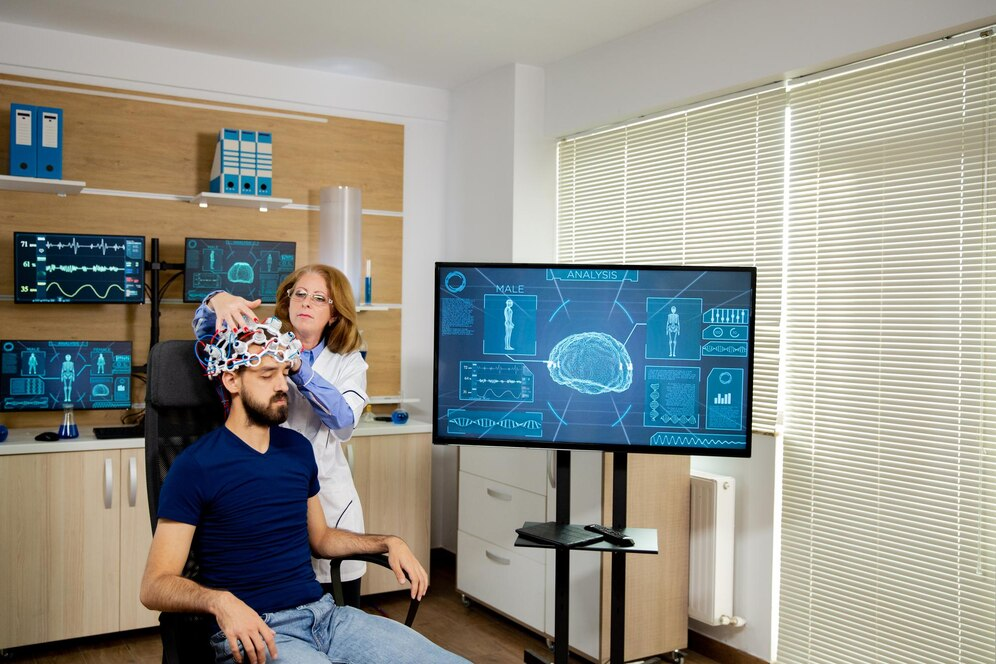
What equipment is used in neurofeedback sessions?
Neurofeedback sessions use EEG (electroencephalogram) equipment to monitor brainwave activity. Sensors are placed on the scalp to detect electrical patterns, which are displayed on a computer screen. The feedback guides the brain toward desired states, improving mental function over time.
During a neurofeedback session, recording of brain waves is carried out using EEG devices with the active brainwaves process focusing on feedback methods. To measure the activity of the brain, small devices called electrodes are placed to the exterior of the head. The signals are fed into a processor in the computer that is for purposes of displaying rapidly changing graphics or video games.
An individual is given feedback with respect to their brainwaves to assist them in achieving a better state of imbalance. The treatment is safe and is required for appropriate brain functions such as anxiety and other disorders such as ADHD and sleep disorders.
What types of feedback are provided in biofeedback therapy?
The types of feedback provided in biofeedback therapy are visual, auditory, and sometimes tactile feedback. For example, heart rate or muscle tension may be displayed on a screen, or sounds may indicate changes in body functions. This feedback helps individuals learn to control physiological responses effectively.
Through biofeedback therapy, people get one or more forms of feedback to enable them to self-regulate biologically. Visual feedback includes the use of line or bar charts showing variation in heart rate, muscular contraction, or even temperature of the skin or some other surface. In terms of auditory feedback, there may be some sounds or tones that are vibrating at a given frequency or at many frequencies to reflect the stress or even the relaxation of the body after having performed some stress reduction exercises.
Other sophisticated biofeedback instruments may also incorporate such forms as tactile feedback or vibrations. Because of these signals, they can engage in such techniques as deep breathing, progressive muscle relaxation, or guided imagery in order to change how their body feels. With time, the skill of proper self-regulation is developed and enables better management of health.
How long does a typical neurofeedback session last?
A typical neurofeedback session lasts about 30 to 60 minutes. The duration may vary depending on the individual’s needs and the specific protocol used. Regular sessions over weeks or months are usually recommended to achieve optimal results.
Typical neurofeedback sessions last from thirty to sixty minutes depending on the individual’s prerogatives and how complex the issue is. During the session, the balancer utilizes stimuli, such as video or games, whose responses rely on the electrical activity of the brain as it occurs.
The session is generally monitored by the therapist who alters the protocol if need be with the intention of directing the brain towards a particular set point. Many sessions, usually between 10 and 40 or more sessions need to be done for the brain to adopt and keep these new patterns, hence improving mental function and the mood of the individual.

What is the role of a therapist in biofeedback training?
The role of a therapist in biofeedback training guides individuals through the process, interpreting data and teaching self-regulation techniques. They help set goals and adjust the feedback protocol as needed. Their role is crucial in ensuring effective learning and symptom management.
The therapist will begin with analyzing the patient and identifying what has to be measured, for example, heart beating rate or tension of a muscle. Throughout the sessions, the therapist receives biofeedback data and gives comments about the way stress or relaxation affects the different body parts.
They educate the patient on self-regulatory procedures, such as BP or TPMR technique, according to the specific preference of the patient as graded by the patient’s performance. The therapist also modifies the feedback regimes until the patient manages all the feedback so that the training is indeed an exercise in learning to modulate one’s body for efficient caregiving.
How are progress and results measured in neurofeedback and biofeedback?
Progress in neurofeedback and biofeedback is measured by monitoring changes in brainwave patterns or physiological responses. Regular assessments and tracking of symptoms help evaluate effectiveness. Improvements in focus, relaxation, and symptom reduction indicate successful training.
In neurofeedback, change must be evidenced by changes in brain wave patterns, usually by means of some EEG readings. The psychotherapist would check the compared baseline brain pattern and the brain activity from later sessions over time, and note how well the goals of balancing are being met.
The integration of technology with humans is one of the advancements in biofeedback where one can control certain physiological aspects, for instance, muscle contractions and the variability of the heart rate. In this regard, the patients commonly maintain biofeedback diaries for motivation in the course of the therapy and record aspects such as pain or attention directed to certain activities. In the long run, such information assists in the adjustment of the protocols so as to improve the effectiveness of the training and the efficiency of reaching required results.
Conclusion:
The scope of neurofeedback as well as the information feedback to the body is how self-training of the sports and the brain if at all is made possible. Gradual training and regular feedback are the only two things required to make a person comprehensively deal with or avoid a situation such as stress and anxiety. With these methods aided by adequately qualified personnel and specialized equipment, they become a soft and more client-centered approach. Understanding various non medical interventions helps to integrate this medical strategy effectively into the body for better health.
Neurofeedback-Biofeedback
Neurofeedback is fundamentally based on operant conditioning. People can learn to identify and manipulate patterns formed by their brainwaves.
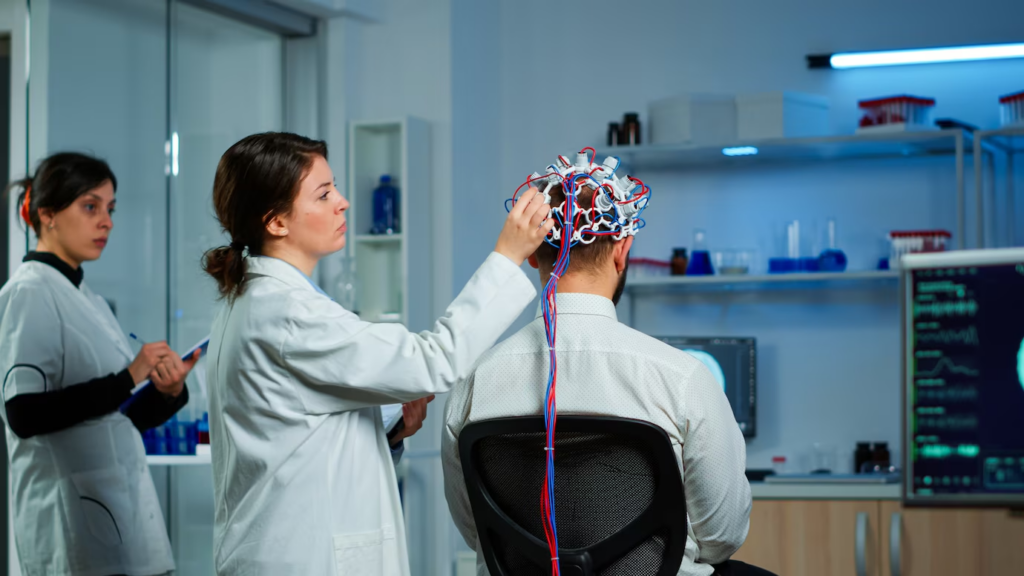
Neurofeedback and biofeedback treatments are a class of therapies that aim at achieving voluntary control of some bodily functions without employing invasive techniques. The distinction is that neurofeedback is based solely on brain activity while there are other forms of biofeedback that incorporate other aspects such as heart rates, muscle tension, etc. These methods help in coping with stress, anxiety, and chronic pain.
It’s within these general principles that individuals can be able to control themselves. Therefore, this document addresses some of the most frequently asked questions about these therapies, answers them in brief, and provides visual aids, if necessary, to enhance comprehension.
What are the key principles of neurofeedback?
The key principles of Neurofeedback are based on training the brain to self-regulate its activity. It involves monitoring brainwaves and providing real-time feedback to encourage balanced patterns. Techniques often include visual or auditory cues to guide brain function. The goal is to improve mental health, focus, and emotional stability.
Sensors attached to the scalp detect brainwave activity for Neurofeedback. The feedback provided to the individual through visual or auditory means in real time helps them reshape their brainwave patterns. As an example, when a participant achieves a target level of brain activity, he or she may trigger pleasant sounds as reinforcement.
In this way, the brain is trained to stay at a pacified state without external assistance eventually resulting in improved mental abilities as well as emotional stability. Techniques of neurofeedback have been successfully deployed to treat attention deficit hyperactivity disorder, anxiety, and sleep related problems thus enhancing mental health.
How does biofeedback help in managing stress?
Biofeedback helps in stress management by teaching individuals to control physiological functions like heart rate and muscle tension. It uses sensors to provide real-time feedback on body responses, enabling conscious adjustments. Techniques include breathing exercises and muscle relaxation for stress relief.
One such method, known as biofeedback, involves the use of electrodes on the subject’s body to record various physiological activities like heart rate, skin heat and muscle contractions. This information can be represented either visually or acoustically so that recognition of such body responses associated with stress is facilitated.
For instance, it can be displayed that heart rate comes up during stress, and therefore deep breathing or tensing and relaxing specific muscle groups can urge the user to practice. Such techniques help individuals reducing their level of stress thus attaining a favorable health status. Chronic pain, anxiety, tension headaches and other discomforts are treated with biofeedback and the quality of life improved.
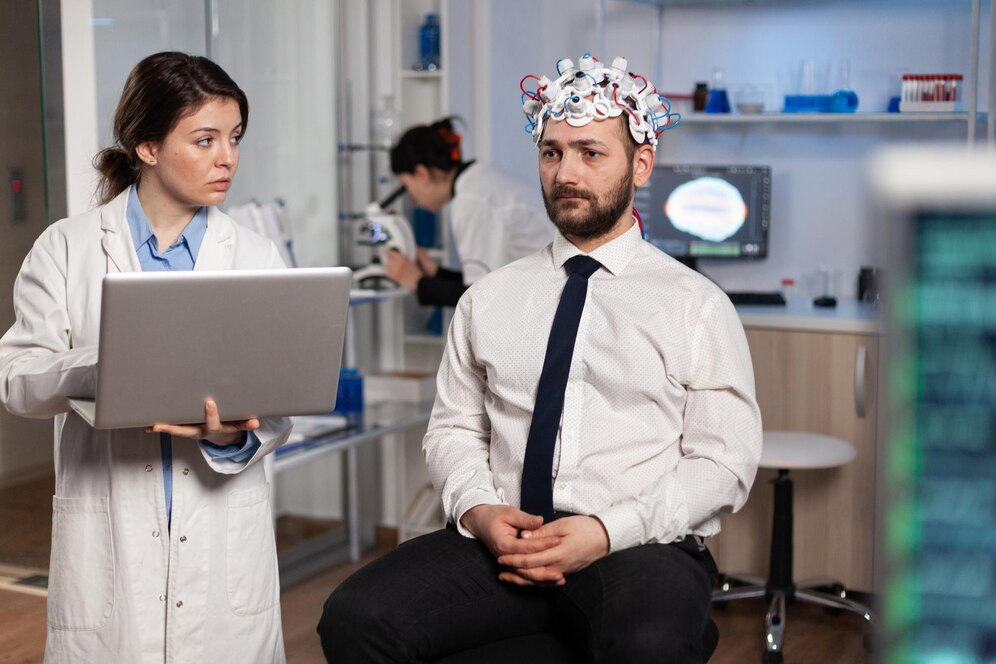
What techniques are used in neurofeedback therapy?
Neurofeedback therapy uses techniques like EEG (electroencephalogram) to monitor brainwaves. Techniques include auditory and visual feedback, like games or sounds, that guide the brain toward optimal functioning. It trains the brain to alter its activity, enhancing focus, mood, and relaxation.
The neurofeedback therapy gets rid of epileptic seizures with the help of EEG sensors strapped onto the scalp for measuring the activity in the brain. Feedback is given depending on the patterns of active brain waves through audio-visual interaction that alters the form of play or utilization of sounds.
For example, a certain game cannot advance unless a particular action is performed by the brain, thus, balancing both attention and concentration. After several sessions, the brain can do this on its own, leading to improvements in attention, emotional control and stress management. It can also be applied in more than one and not stereotypically because each person requires a different approach in treatment.
How does biofeedback differ from neurofeedback?
The main difference between biofeedback and neurofeedback is biofeedback involves monitoring various physiological functions, like heart rate and muscle tension, while neurofeedback specifically targets brainwave activity. Biofeedback uses devices to track bodily responses, whereas neurofeedback uses EEG to guide brain function. Both promote self-regulation and stress management.
The main distinction of biofeedback and neurofeedback is their emphasis. Biofeedback deals with such physiological activities as heart rate, skin heat, muscle tension, and is more comprehensive. It makes use of sensors and provides feedback so that one can purposefully change some of these functions of the body. Neurofeedback primarily uses EEG to record and read brainwaves.
Feedback can be given through auditory or visual prompts and the aim is to teach the brain to adopt better states of balance. Self-regulator abilities refer to the supervision and management of the brain’s activities, while some passive feedback means on the body’s functionality. All of them however play crucial roles in dealing with stress and anxiety and other related disorders.
What conditions can neurofeedback and biofeedback treat?
Neurofeedback and biofeedback are used to treat conditions like anxiety, ADHD, chronic pain, and sleep disorders. Neurofeedback focuses on brainwave regulation, while biofeedback targets physiological functions. Both methods help individuals gain control over stress responses, improving mental and physical health.
Particularly, Neurofeedback can be successfully used on neurological disorders that are caused due to brain wave imbalance, such disorders involve anxiety, depression and sleep disorders amongst other impulsive disorders like ADHD. neurofeedback is effective in helping the patients train themselves into healthier functional activity such as control over attention, regulation of the heart & emotions and good quality sleep.
Biofeedback on the contrary focuses on stress related disorders as well as those that involve the autonomic system, these disorders can be chronic pain, Primary tension headache, and Hypertension. This provides ability to the person to learn certain physiological responses like muscle tension, heart rate or skin temperature. And they work in a way that offers people self-control, and therefore, the symptoms can be managed positively for the better.

What equipment is used in biofeedback sessions?
Equipments used in biofeedback sessions are various sensors and devices like electromyography (EMG) for muscle tension, electrodermal activity (EDA) sensors for skin conductivity, and heart rate monitors. These tools provide real-time feedback, helping individuals learn to control their physiological responses for better health.
In biofeedback sessions, various types of sensors are utilized according to the type of physiological function that is being focused upon. The EDA sensors look for skin conductance tests, while the EMG sensors shear measure tension of the muscle. Heart rate monitors are useful in monitoring cardiovascular events and evaluating the stress response of the body.
Skin temperature sensors can also be used for measuring relaxation or stress. The users receive the feedback of such devices in the form of auditory or visual signals, which help the person to perform mental activities such as voluntary muscle contraction or deep breathing. Such instantaneous feedback assists users in learning how to control stress, pain, and other disorders.
How long does it take to see results with neurofeedback and biofeedback?
Results from neurofeedback and biofeedback vary, but individuals often notice improvements within 10-20 sessions. The duration depends on the condition and individual response. Consistent practice leads to better outcomes, with lasting benefits in mental focus, stress reduction, and overall well-being.
Depending on the individual’s condition, the degree of the problem, and how willing one is to put in the effort, the time it will take to experience and recognize improvement using neurofeedback and biofeedback is different. Usually, changes begin to occur by the 10th to 20th session, but some individuals can begin reaping the benefits even before.
The practices are rewarding due to devoting oneself to consistency and routinely trying in an effort to alter how the brain and body are regulated. A series of therapy assessments spaced over a number of months would be necessary for conditions like ADHD or chronic anxiety to be effectively managed and treated. Better concentration, less mental unrest and emotional turmoil, and enhanced life satisfaction are some of the expected additives.
Conclusion
One of the aspects that neurofeedback and biofeedback have taken further is the self-regulation capability of the brain and body to enhance one’s mental and physical well-being. With the help of such methods as EEG training and providing feedback to the subjects, such as heart rate data, they can manage stress, anxiety, or other situations in which these techniques can help. The conclusions that clarify this point cannot be achieved without regular implementation of the therapies. Such exploring these questions allows people to take the right steps for themselves in neurofeedback’s and biofeedback’s evolution in wellness.
